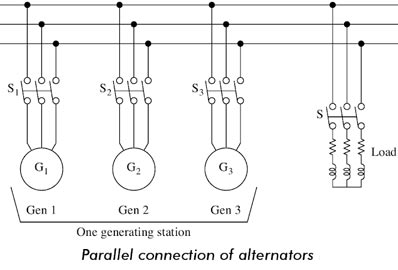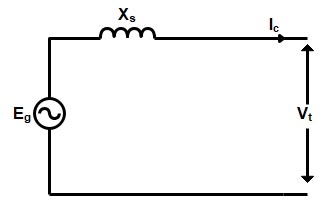NLC GET Electrical Fuzzy Systems MCQ Part 1
1.Fuzzy logic is a form of
A. Two-valued logic
B. Crisp set logic
C. Many-valued logic
D. Binary set logic
Answer-C
2.The room temperature is hot. Here the hot (use of linguistic variable is used. can be represented by
_______ .
A. Fuzzy Set
B. Crisp Set
C. Both of these
D. None of these
Answer-A
3.Fuzzy Set theory defines fuzzy operators. Choose the fuzzy operators from the following
A. AND
B. OR
C. NOT
D. All of these
Answer- D
4.Fuzzy logic is usually represented as
A. IF-THEN-ELSE rules
B. IF-THEN rules
C. Both a & b
D. None of the mentioned
Answer- B
PKR TECH CLASSES
5.______________ is/are the way/s to represent uncertainty.
A. Fuzzy Logic
B. Probability
C. Entropy
D. All of these
Answer-D
6.____________ are algorithms that learn from their more complex environments (hence eco) to generalize, approximate and simplify solution logic.
A. Fuzzy Relational DB
B. Ecorithms
C. Fuzzy Set
D. None of these
Answer-C
7.What is the form of Fuzzy logic
A. Two-valued logic
B. Crisp set logic
C. Many-valued logic
D. Binary set logic
Answer-C
8.The truth values of traditional set theory is ____________ and that of fuzzy set is __________
A. Either 0 or 1, between 0 & 1
B. Between 0 & 1, either 0 or 1
C. Between 0 & 1, between 0 & 1
D. Either 0 or 1, either 0 or 1
Answer-A
9.The values of the set membership is represented by ___________
A. Discrete Set
B. Degree of truth
C. Probabilities
D. Both Degree of truth & Probabilities
Answer-B
10.There are also other operators, more linguistic in nature, called __________ that can be applied to fuzzy set theory.
A. Hedges
B. Lingual Variable
C. Fuzz Variable
D. None of the mentioned
Answer-A
PKR TECH CLASSES
11.Traditional set theory is also known as Crisp Set theory.
A.TRUE
B. FALSE
C. Traditional set theory is not there.
D. None of the Above
Answer-A
12.Which of the following is not Application Areas of Fuzzy Logic
A.Automotive Systems
B. Domestic Goods
C. Domestic Control
D. Environment Control
Answer-C
13.The values of the set membership is represented by ___________
A. Discrete Set
B. Degree of truth
C. Probabilities
D. Both Degree of truth & Probabilities
Answer-D
14.Who was the inventor of Fuzzy Logic
A. Doug cutting
B. John McCarthy
C. Lotfi Zadeh
D. John cutting
Answer-C
15.How many output Fuzzy Logic produce
A.2
B. 3
C. 4
D. 5
Answer-A
PKR TECH CLASSES
16.How many main parts are there in Fuzzy Logic Systems Architecture
A.3
B. 4
C. 5
D. 6
Answer-B
17.Which of the following is not a part of fuzzy logic Systems Architecture
A.Fuzzification Module
B. Knowledge Base
C. Defuzzification Module
D. Interference base
Answer-D
18.Fuzzy logic is useful for both commercial and practical purposes
A.True, False
B. True, True
C. False, False
D. False, True
Answer-B
19.What is Fuzzy Logic
A. a method of reasoning that resembles human reasoning
B. a method of question that resembles human answer
C. a method of giving answer that resembles human answer.
D. None of the Above
Answer-A
20.Fuzzy Logic can be implemented in
A.Hardware
B. software
C. Both A and B
D. None of the Above
Answer-C
PKR TECH CLASSES
https://www.youtube.com/channel/UC4_D50vMu1wbQrPaLFYo6Eg https://www.youtube.com/channel/UC4_D50vMu1wbQrPaLFYo6Eg RRB JE, SSC AE/JE UPSSSC JE, SSC JE, CIVIL ENGINEERING MCQs, ELECTICAL ENGINEERING MCQs, preavious year quesion papers, dmrc, lmrc, drdo,rrb ntpc, ntpc, pgcil, dsssb, states board, GATE IES EE, ESE, ECE, ME, CE, IT & CS EXAM MATERIALS & OLD PAPERS Electrical Engineering https://t.me/pravendrarajpoot Daily news & current affairs in hindi & english fully updated Daily current affairs https://t.me/newsdailypkr Engineering Discussion group for your upcoming exams, you can ask your any query regarding your problem,👇👇👇 https://t.me/joinchat/JObxeA7n6S4qvnegrGhTgA PKR ELECTRICAL ENGINEERING I am sure this is the best place for you guys subscribe and get success IF YOU WANT TO JOIN ME ON TELEGRAM FOR PDF @newsdailypkr AE/JE EE, ESE, ECE, ME, CE, IT & CS EXAM MATERIALS & OLD PAPERS Electrical Engineering https://t.me/pravendrarajpoot facebook page:- Pravendra Kumar Rajpoot https://t.me/newsdailypkr https://chat.whatsapp.com/5AS7dNFTP4H4vVsiWsqHrT https://t.me/srk50 https://t.me/pravendrarajpoot https://t.me/joinchat/JObxeA7n6S4qvnegrGhTgA https://t.me/pravendrarajpoot Daily news & current affairs in hindi & english fully updated Daily current affairs https://t.me/newsdailypkr Engineering Discussion group for your upcoming exams, you can ask your any query regarding your problem,👇👇👇 https://t.me/joinchat/JObxeA7n6S4qvnegrGhTgA PKR ELECTRICAL ENGINEERING I am sure this is the best place for you guys subscribe and get success IF YOU WANT TO JOIN ME ON TELEGRAM FOR PDF @newsdailypkr AE/JE EE, ESE, ECE, ME, CE, IT & CS EXAM MATERIALS & OLD PAPERS Electrical Engineering https://t.me/pravendrarajpoot facebook page:- Pravendra Kumar Rajpoot https://t.me/newsdailypkr https://chat.whatsapp.com/5AS7dNFTP4H4vVsiWsqHrT https://t.me/srk50 https://t.me/pravendrarajpoot https://t.me/joinchat/JObxeA7n6S4qvnegrGhTgA
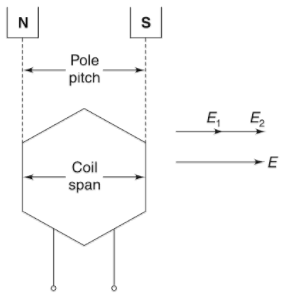
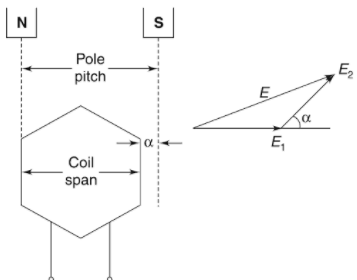
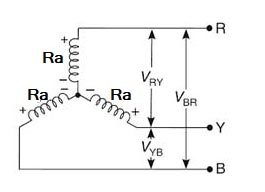 Generally, the armature resistance is measured by applying the known d.c. voltage and measuring the d.c. current through it. The ratio of applied voltage and measured current is the armature resistance. But due to the skin effect, the effective resistance under a.c. conditions are more than the d.c. resistance. Generally the effective armature resistance under a.c. conditions are taken 1.25 to 1.75 times the d.c. resistance.
While measuring the armature resistance, it is necessary to consider how the armature winding is connected whether in star or delta. Consider a star connected armature winding as shown in Fig.
When the voltage is applied across any two terminals of an armature winding, then the equivalent resistance is the series combination of the two resistance of two different phase windings,
...RRY= Resistance between R-Y terminals
= Ra + Ra = 2Ra
where Ra = armature resistance per phase
Ra = RRY/2 Ω/ph
Thus in star connected alternator, the armature resistance per phase is half of the resistance observed across any two line terminals.
Thus per phase DC armature resistance is half of the measured value
Ra = 5/2 = 0.25Ω
Generally, the armature resistance is measured by applying the known d.c. voltage and measuring the d.c. current through it. The ratio of applied voltage and measured current is the armature resistance. But due to the skin effect, the effective resistance under a.c. conditions are more than the d.c. resistance. Generally the effective armature resistance under a.c. conditions are taken 1.25 to 1.75 times the d.c. resistance.
While measuring the armature resistance, it is necessary to consider how the armature winding is connected whether in star or delta. Consider a star connected armature winding as shown in Fig.
When the voltage is applied across any two terminals of an armature winding, then the equivalent resistance is the series combination of the two resistance of two different phase windings,
...RRY= Resistance between R-Y terminals
= Ra + Ra = 2Ra
where Ra = armature resistance per phase
Ra = RRY/2 Ω/ph
Thus in star connected alternator, the armature resistance per phase is half of the resistance observed across any two line terminals.
Thus per phase DC armature resistance is half of the measured value
Ra = 5/2 = 0.25Ω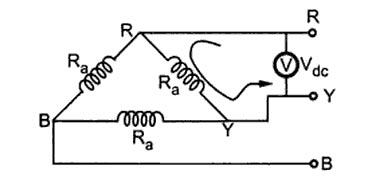 When the voltage is applied across any two terminals, then one phase winding appears in parallel with the series combination of the other two.
Hence the equivalent resistance across the terminals is the parallel combination of the resistance Ra and 2Ra.
When the voltage is applied across any two terminals, then one phase winding appears in parallel with the series combination of the other two.
Hence the equivalent resistance across the terminals is the parallel combination of the resistance Ra and 2Ra.




